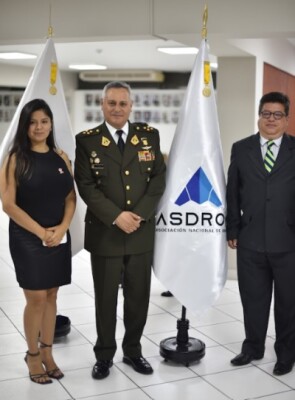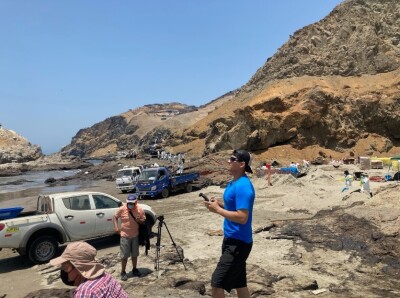For those of us who have spent our lives doing business in Latin America, only two things are certain: Brazilians speak Portuguese and Peruvians always do things differently. In the case of Brazil, it is because they were colonized by Portugal, a superpower at the time of the discovery of the American continent. But the case of Peru, even though the comment is tongue in cheek, is more puzzling, perhaps it is because they had such a strong civilization to start with when the Spanish Conquistadores arrived. The Incas were unbelievably advanced in comparison to the hunter-gatherers who populated most of the Latin American continent at the time, so they offered more resistance and therefore their cultural strength survives to this day.

One thing is certain, if you are going to Peru to do business, you will be well served by forgetting everything you have learned in any other LATAM country. Peru will surprise you at every step.
The uncrewed aviation industry is no exception and the Asociación Nacional de Drones de Peru is proof that they intend to do things their way. We had the opportunity to interview Katty Flores, current President of Asdron for an exclusive conversation not only about the association she presides but also the state of the drone legislation in that country.
“We are a non-profit organization, whose main objective is to create a community of drone pilots and operators that promotes responsible and safe use, as well as voluntary participation in emergency situations and humanitarian aid,” Katty said. “Our main goal is to gather all industry stakeholders, including military, civilian and public and private entities, as well as pilots, manufacturers, public safety agency and many others in one place to exchange ideas on how to safely integrate drones into our daily lives safely and efficiently. We are also very proud to be the organizers of the second edition of the Expo International Drone Tech in 2025 and the First Regional Drone Congress in 2024.”
Katty is a lawyer by trade, and she was first exposed to drones in 2016 when she was working for the Ministry of Oil and Mines of Peru in the portion of the Amazon jungle that belongs to that Andean country. Later in 2018 she saw firsthand the benefits of using an uncrewed aerial vehicle (UAV) to benefit remote communities and the environment.
“When I saw what the drone could do for an indigenous community and for their environment, I was hooked, and I made a conscious decision to dedicate the rest of my life to promoting the safe use of these aerial marvels,” Katty said with enthusiasm. “The first thing I did was to take a Sabbatical to volunteer as community service in the jungles of Peru, spending a year in the remote community of Pucallpa, where I tried to understand the needs of the people there and tried to bring simple solutions to their most pressing issues. It was there that I saw a private drone and asked the owner to help me take some images that we needed to evaluate the extent of the deforestation in a certain area. I was amazed at the ease and speed with which he was able to give us the information.”
 Pucallpa is a city on the Ucayali River, a major tributary of the Amazon River in the Amazonian rainforest of eastern Peru, and there Katty found her call.
Pucallpa is a city on the Ucayali River, a major tributary of the Amazon River in the Amazonian rainforest of eastern Peru, and there Katty found her call.
“In 2021, my work for the DGAC (the national agency that oversees general aviation in Peru) ended and I decided to become active in ASDRON, first becoming Executive director and now President,” Katty said. “We have signed agreements with 10 public entities, and we expect that list to grow even larger, our seven areas of expertise are becoming stronger with time and the increasing number of pilots and manufacturers that are joining our ranks.”
The seven areas of expertise, or sub-groups, that Katty is referring to are as follows:
1. Legal,
2. Research and development,
3. Tactical Operations,
4. Pilots - Instruction and training,
5. Environmental,
6. First Person View (FPV) Flights,
7. Search and Rescue.
“Our goal is to bring all stakeholders within Peruvian society that can benefit from the use of drones and sit them at the same table so we can discuss the best way to deploy uncrewed aviation in the country,” Katty explained. “Most other countries in Latin America already have comprehensive drone legislation, but Peru is lagging behind, not because we are lazy or not ready, but because our conditions are different, and we want to make sure that our legislation reflects exactly the needs of our users and our communities as well as local manufacturers and academia.”
With over 3,000 applications for membership, ASDRON is well positioned to become a major player in the future of uncrewed aviation and the legislation that will oversee its deployment. The tight collaboration between Katty and her team at ASDRON and the DGAC will make sure that drone legislation is passed in a safe and timely manner.















Comments